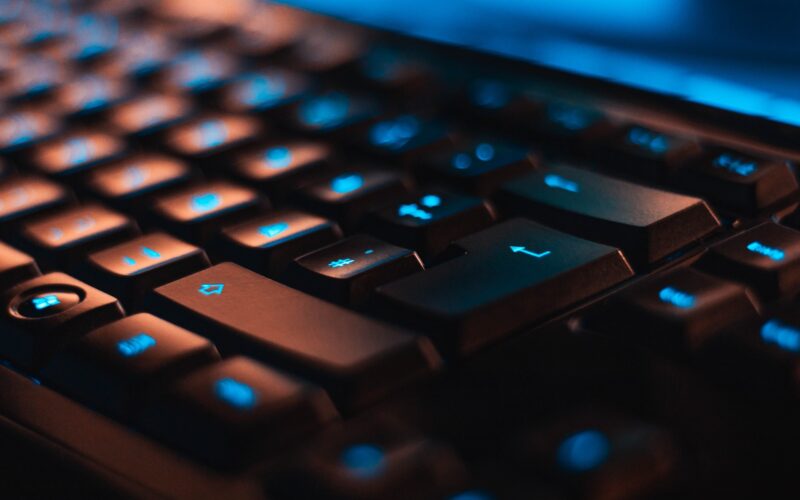The keyboard interface error is a message that appears on desktop computers when the computer is unable to detect a keyboard during the boot-up process. This message is usually accompanied by a prompt to press the F1 key to resume the boot-up process. While the error message can be frustrating and concerning for users who may not know how to resolve it, the good news is that there are several potential causes and solutions to this problem.
One of the most common causes of the keyboard interface error is a damaged keyboard or keyboard cable. Over time, the cable that connects the keyboard to the computer can become frayed or damaged, preventing the computer from recognizing the device. Similarly, a keyboard with a damaged circuit board or malfunctioning keys can also cause the error message to appear.
Another possible cause of the error is a faulty keyboard interface port on the motherboard. This port is the connection point between the keyboard cable and the motherboard, and if it becomes damaged or malfunctions, the computer will not be able to recognize the keyboard.
Corrupted BIOS settings can also cause the keyboard interface error to appear. If the settings in the computer’s BIOS are incorrect or corrupted, the computer may not be able to detect the keyboard during the boot-up process.
Finally, incompatible hardware can also cause the keyboard interface error. For example, using a non-standard keyboard or an outdated motherboard can prevent the computer from recognizing the keyboard.
In the following sections, we will discuss each of these causes in more detail and provide steps for troubleshooting and resolving the keyboard interface error.
Click To See Content Of This Post
Understanding the Causes of the Keyboard Interface Error
Damaged Keyboard or Keyboard Cable
One of the most common causes of the keyboard interface error is a damaged keyboard or keyboard cable. Over time, the cable that connects the keyboard to the computer can become frayed or damaged, preventing the computer from recognizing the device. Similarly, a keyboard with a damaged circuit board or malfunctioning keys can also cause the error message to appear.
To determine whether a damaged keyboard or cable is causing the issue, first, ensure that the keyboard is plugged in correctly and that the cable is not visibly damaged. If this is not the case, try using a different keyboard or cable to see if this resolves the problem.
Faulty Keyboard Interface Port on the Motherboard
The keyboard interface port on the motherboard is the connection point between the keyboard cable and the motherboard. If this port becomes damaged or malfunctions, the computer will not be able to recognize the keyboard. To determine if this is the cause of the keyboard interface error, first, ensure that the keyboard cable is securely plugged into the port.
If the cable is plugged in correctly, try using a different keyboard to see if this resolves the problem. If a different keyboard works, then the issue may be with the original keyboard or cable. However, if the error message persists even with a different keyboard, then the keyboard interface port on the motherboard may be faulty and require repair or replacement.
Corrupted BIOS Settings
Corrupted or incorrect settings in the computer’s BIOS can also cause the keyboard interface error to appear. To resolve this issue, access the computer’s BIOS settings during the boot-up process and check that the settings related to the keyboard are correct. If necessary, reset the BIOS settings to their default values.
Incompatible Hardware
Finally, incompatible hardware can also cause the keyboard interface error. For example, using a non-standard keyboard or an outdated motherboard can prevent the computer from recognizing the keyboard. To resolve this issue, check that the keyboard and motherboard are compatible with each other and that all hardware is up-to-date. If necessary, upgrade or replace any incompatible hardware to resolve the issue.
Troubleshooting the Issue
If you are experiencing the keyboard interface error, there are several troubleshooting steps you can take to resolve the issue.
Basic Troubleshooting Steps
First, ensure that the keyboard is plugged in correctly and that the cable is not visibly damaged. If this is not the case, try using a different keyboard or cable to see if this resolves the problem. You should also try restarting the computer to see if this resolves the issue.
Accessing the BIOS Settings
If the basic troubleshooting steps do not resolve the issue, access the computer’s BIOS settings during the boot-up process. Check that the settings related to the keyboard are correct. You may need to refer to the computer’s manual to determine the correct settings. If necessary, reset the BIOS settings to their default values.
Using an External Keyboard
If you are still experiencing the keyboard interface error, try using an external keyboard to rule out the possibility of a damaged keyboard or cable. Connect the external keyboard to the computer and restart the computer. If the error message does not appear when using the external keyboard, then the issue may be with the original keyboard or cable.
Seeking Professional Assistance
If none of the above troubleshooting steps resolve the issue, it may be necessary to seek professional assistance. A technician can help diagnose and resolve the issue, including repairing or replacing any faulty hardware or resetting the BIOS settings.
In the following section, we will discuss how to resolve the keyboard interface error based on the specific cause of the issue.
Solving the Keyboard Interface Error
Once you have identified the specific cause of the keyboard interface error, you can take steps to resolve the issue.
Replacing the Keyboard Cable or the Keyboard Itself
If a damaged keyboard or cable is causing the issue, you will need to replace the damaged component. First, try replacing the cable to see if this resolves the issue. If the issue persists, replace the keyboard itself. To do this, purchase a new keyboard that is compatible with your computer and follow the manufacturer’s instructions for installation.
Repairing or Replacing the Keyboard Interface Port on the Motherboard
If the keyboard interface port on the motherboard is faulty, you may need to repair or replace it. This is a more advanced repair and should only be attempted by those with experience working with computer hardware. If you are not comfortable with this type of repair, seek professional assistance. A technician can help diagnose and repair any issues with the motherboard or keyboard interface port.
Resetting the BIOS Settings to Default
If corrupted or incorrect settings in the computer’s BIOS are causing the issue, you can reset the BIOS settings to their default values. To do this, access the computer’s BIOS settings during the boot-up process and find the option to reset the settings to default. This will vary depending on the computer’s manufacturer and model.
Upgrading or Replacing Incompatible Hardware
If incompatible hardware is causing the issue, you will need to upgrade or replace the hardware. This may involve upgrading to a newer motherboard or purchasing a keyboard that is compatible with your current hardware. Check the manufacturer’s website or user manual to determine which hardware is compatible with your current setup.
In some cases, it may be necessary to seek professional assistance to resolve the issue. A technician can help diagnose the problem and recommend the best course of action for resolving the keyboard interface error.
Conclusion
In conclusion, the keyboard interface error can be a frustrating issue for desktop computer users. However, there are several potential causes and solutions to this problem. By understanding the possible causes of the issue, troubleshooting the problem, and taking steps to resolve the issue based on the specific cause, you can effectively resolve the keyboard interface error.
It is important to note that proper maintenance and troubleshooting can help prevent similar issues in the future. Regularly checking the keyboard cable, ensuring all hardware is up-to-date and compatible, and resetting the BIOS settings as necessary can all help prevent the keyboard interface error from occurring.
If you are not comfortable with troubleshooting the issue on your own, seek professional assistance. A technician can help diagnose and repair any issues with your computer hardware and ensure that your system is functioning properly.



![List of all Keyboard Shortcuts [300 Keyboard Shortcuts]](https://kmgadvice.com/wp-content/uploads/2023/06/anas-alshanti-feXpdV001o4-unsplash-360x240.jpg)

![List of 200+ Keyboard Commands for Mac [Guide]](https://kmgadvice.com/wp-content/uploads/2023/06/nhu-nguyen-IL1qSqEMNBo-unsplash-360x240.jpg)